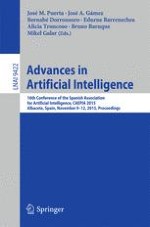2015 | OriginalPaper | Buchkapitel
Applying Neuroevolution to Estimate the Difficulty of Learning Activities
verfasst von : Francisco J. Gallego-Durán, Carlos J. Villagrá-Arnedo, Rafael Molina-Carmona, Faraón Llorens-Largo
Erschienen in: Advances in Artificial Intelligence
Aktivieren Sie unsere intelligente Suche, um passende Fachinhalte oder Patente zu finden.
Wählen Sie Textabschnitte aus um mit Künstlicher Intelligenz passenden Patente zu finden. powered by
Markieren Sie Textabschnitte, um KI-gestützt weitere passende Inhalte zu finden. powered by
